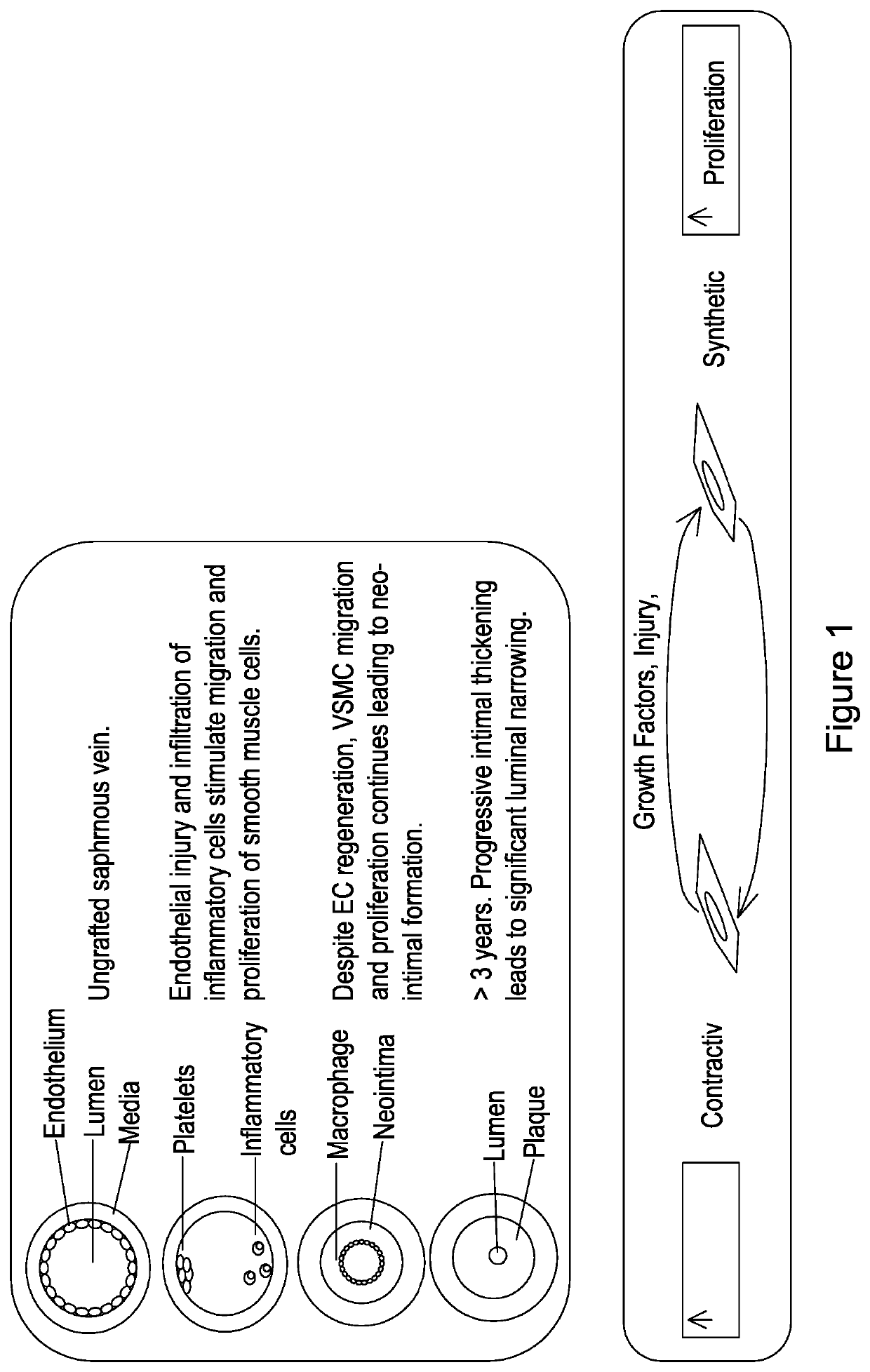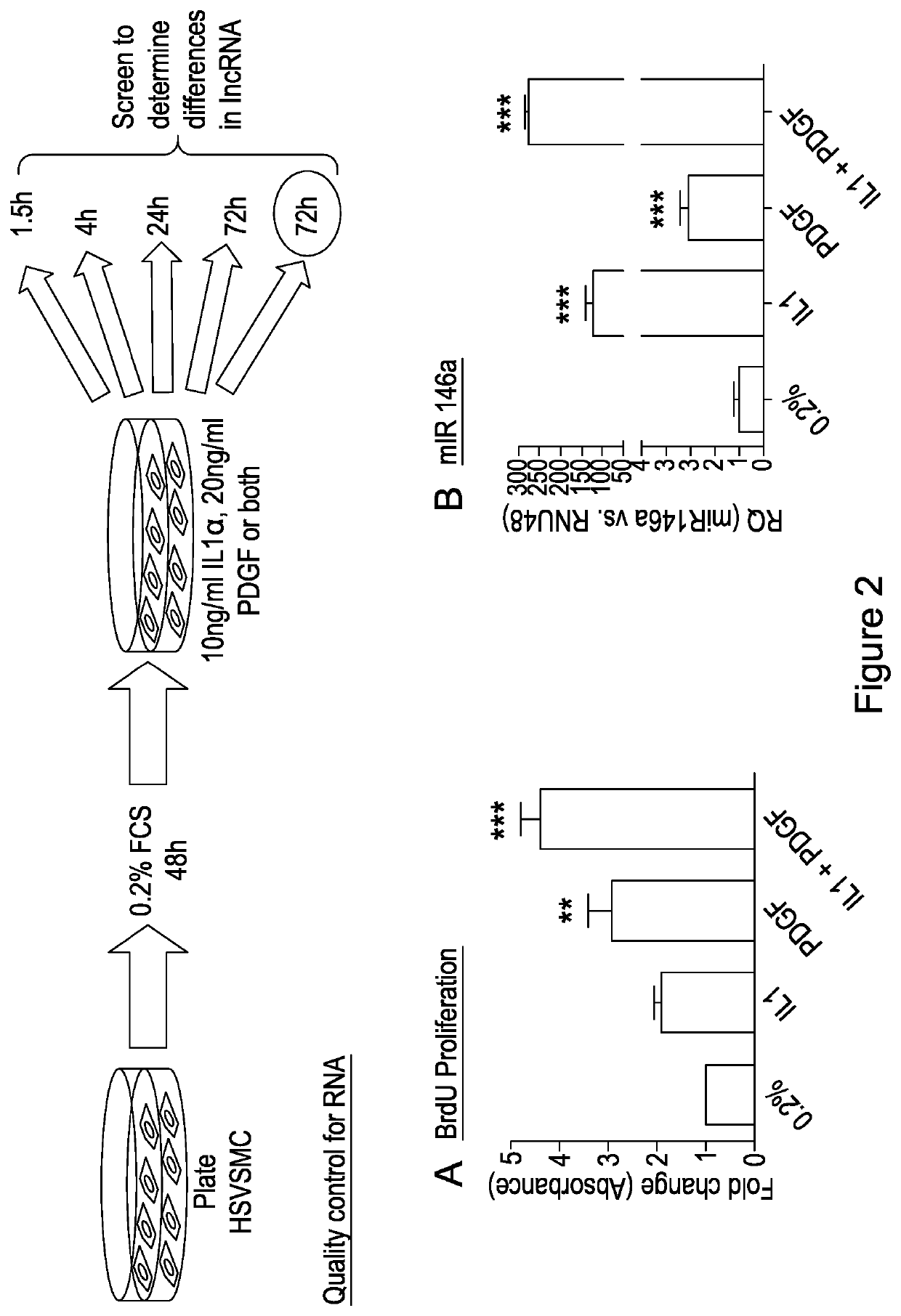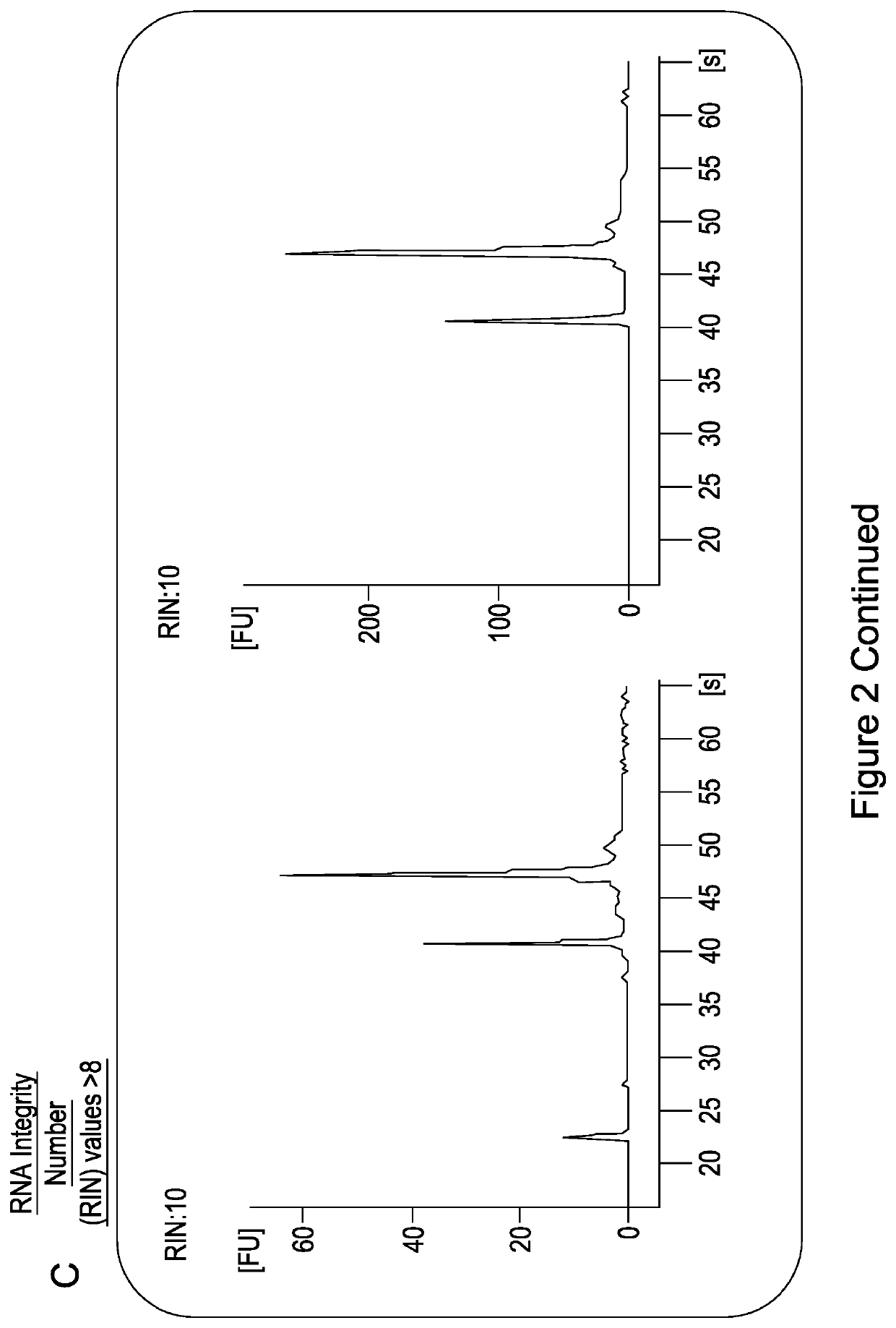Materials and methods for the treatment of vascular disease
a technology for vascular disease and materials, applied in the direction of cardiovascular disorders, genetic material ingredients, drug compositions, etc., can solve the problems of little known about the role of long non-coding rna (lncrna), no therapeutic intervention has proved successful in targeting vascular remodelling, and failure of 30 to 50% of grafted vessels. to achieve the effect of inhibiting has2 expression
- Summary
- Abstract
- Description
- Claims
- Application Information
AI Technical Summary
Benefits of technology
Problems solved by technology
Method used
Image
Examples
Embodiment Construction
[0137]Phenotypic switching of vascular smooth muscle cells (VSMCs) from a contractile to a synthetic state is implicated in diverse vascular pathologies including atherogenesis, plaque stabilisation, and neointimal hyperplasia. However, very little is known as to the role of long non coding RNA (lncRNA) during this process. The inventors have investigated a role for long non-coding (lnc)RNAs in VSMC biology and pathology.
[0138]Vessel wall remodelling is an integral pathological process central to cardiovascular diseases including atherogenesis, plaque rupture and neointimal hyperplasia associated vein graft failure and in-stent restenosis 1, 2. Resident vascular smooth muscle cells (VSMC) are typically quiescent and contractile in the normal physiological state. However, following pathological or iatrogenic vascular injury, the release of cytokines and growth factors from VSMC, aggregated platelets and inflammatory cells on the damaged intimal surface, leads to “phenotypic switching...
PUM
| Property | Measurement | Unit |
|---|---|---|
| quantitive real time PCR | aaaaa | aaaaa |
| time | aaaaa | aaaaa |
| time | aaaaa | aaaaa |
Abstract
Description
Claims
Application Information
 Login to View More
Login to View More - R&D
- Intellectual Property
- Life Sciences
- Materials
- Tech Scout
- Unparalleled Data Quality
- Higher Quality Content
- 60% Fewer Hallucinations
Browse by: Latest US Patents, China's latest patents, Technical Efficacy Thesaurus, Application Domain, Technology Topic, Popular Technical Reports.
© 2025 PatSnap. All rights reserved.Legal|Privacy policy|Modern Slavery Act Transparency Statement|Sitemap|About US| Contact US: help@patsnap.com



